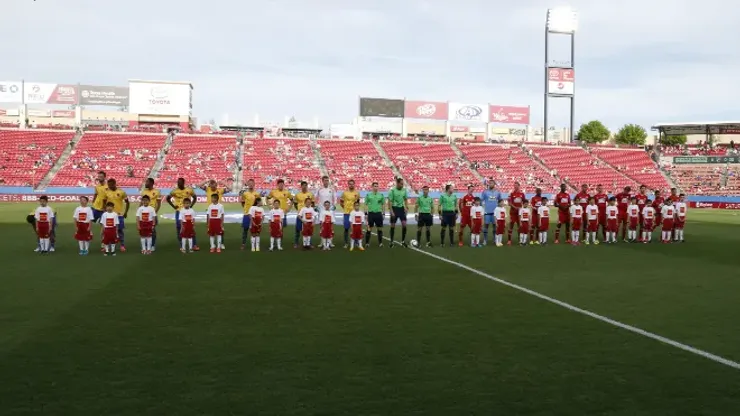Each game, we hear about the MLS attendance numbers at the stadium. However, on TV we notice the vast swath of empty seats at the stadium. Although, this may not apply to you Seattle, Orlando or NYCFC fans.
Then you get your soccer geek on and check the boxscores for the game and see that the attendance has been reported at a sellout or a near sellout. You think to yourself, what the heck is going on here?
Welcome to the world of attendance reporting.
Back in 2006, Mark Ziegler of the San Diego Union-Tribune wrote several articles on sports attendance reporting, where he cites that “Major League Soccer’s attendance numbers have been among the most questioned in pro sports.” In those articles, he reveals several methods used by sports teams to announce crowd turnouts. Everything from ‘tickets distributed’ to one case of a team announcing 12,345 as the reported attendance (creative, huh?).
MLS attendance numbers and how they get exaggerated
Here are 13 ways ticket sellers and clubs get creative to push up numbers, according to an article published in Forbes entitled How Sports Attendance Figures Speak Lies:
- Sell standing-room only tickets. First at a reduced rate to reach a sellout threshold before selling seats in the bowl.
- On season tickets, deeply discount tickets, offer “Buy 2 get 2 deals” or offer pay-as-you-go season tickets. Tickets are tickets. Getting you to close the deal is imperative.
- For group tickets, offer 50 to 70 percent off weekday early season.
- Sponsors get tickets. Each team has 50 to 100 sponsors times 4 to 8 tickets each is 200 to 800 potentially paid season ticket buyers.
- On those sellouts, employees get comps. The front offices have 75 to 150 full-time employees plus innumerable number of part-time staff that could potentially “comp out” 300 to 2000 seats a night.
- Player coaches and retired player comps.
- Visiting team comps – 4 times 35 players per game whether used or unused.
- Umpire/referee comps – 4 Umps/referees equals 16 tickets per game per Umps/referee contract
- Commissioner’s Initiative – requires each team to donate 50 or 100k tickets per year to lower income charities. While this doesn’t impact paid attendance, it can push the needle up for sellouts.
- Voucher redemption – offer free or virtually free discounted tickets through sponsor store or product
- Team charities – The league sends out thousands of tickets to games to local charities via team, seats sold to charity at pennies so they are sold then written off by team.
- Internet – Similar to groups like Travel Zoo, Groupon, etc. Offer deep discounting on 3rd party website to push unsold inventory
- Military Night – Many are offering free tickets, which is a great gesture as it doesn’t count as paid attendance. But, not all. For example, the Orioles just announced a $3 discount deal off of all tickets for all military (active, retired and reserve) and their families, which bumps up paid attendance.
SEE MORE: MLS reported average attendances increase 13% in 2015.
These various mechanisms of boosting up attendances have been utilized across many sports platforms, not just in MLS, and they may have, in part, aided in the growth of the league over its formative years. But now, in my opinion, it is time to get over the fact that the actual game attendance is not reflected in the announced gate numbers. The boon in ticket sales has reduced the number of ‘freebies’ and put more cash in the tills.
SEE MORE: MLS sees 38% decline in 2015 MLS Cup TV viewing numbers.
More people are actually coming out to the parks, not only with the MLS 2.0 teams, but with the charter clubs, specifically in Kansas City and San Jose in their new stadiums. In fact, only Philadelphia has dropped in average MLS attendance numbers since 2010 given their performance in recent years, which is no surprise. That means more revenues in parking, game day merchandise and food sales. And make no mistake that these are important revenues streams for MLS clubs.
Which brings me to this… most of the clubs are still losing money. Going forward, the real bucks are in television revenues. That is where the great leap forward will take place. MLS television revenues are a pittance compared to the ‘big 4’ North American sports leagues, but that’s for another article. So for now, embrace the growth of actual attendance and don’t sweat the numbers. The Nielsen ratings are the ones we should be paying attention to as we look to have MLS attain the status that of a world class league.
200+ Channels With Sports & News
- Starting price: $33/mo. for fubo Latino Package
- Watch Premier League, Women’s World Cup, Euro 2024 & Gold Cup
The New Home of MLS
- Price: $14.99/mo. for MLS Season Pass
- Watch every MLS game including playoffs & Leagues Cup
Many Sports & ESPN Originals
- Price: $10.99/mo. (or get ESPN+, Hulu & Disney+ for $14.99/mo.)
- Features Bundesliga, LaLiga, Championship, & FA Cup
2,000+ soccer games per year
- Price: $5.99/mo
- Features Champions League, Serie A, Europa League & Brasileirāo
175 Premier League Games & PL TV
- Starting price: $5.99/mo. for Peacock Premium
- Watch 175 exclusive EPL games per season






